The Ethereum blockchain has migrated from a Proof-of-Work consensus to a new mechanism under Proof-of-Stake rules. This means that GPU hardware mining is replaced by Validator Nodes in the task of storing and transmitting data, and adding new blocks to the chain. Sensei Node makes it easy for you to set up your own Validator Node and ensures its proper technical execution to secure the Ethereum network while receiving staking rewards.
Disclaimer
- SenseiStake is a platform to create Validator nodes managed by SenseiNode infrastructure for the Ethereum Proof of Stake consensus. With each deposit of 32 ETH a Validator Node is created on the Ethereum Network and an NFT-receipt that certifies the ownership of the Validator is mint to the user that provided the stake. This NFT can be used to claim and withdraw the proceedings from the Validator rewards.
- Ethereum 2.0 staking rewards APR is subject to daily change, based on the overall amount of ETH staked and the Ethereum network activity. These rewards are set and distributed by the protocol itself.
- SenseiStake have a standard flat fee of 10% revenue share, on rewards earned by Validator nodes managed by the SenseiNode infrastructure through the platform.
- Each Validator Node is set with a minimum staking period of 6 months, this exit date is set as the time when the user will be able to withdraw the stake from the Validator. This date is available on the metadata of the NFT that certifies the ownership of the Validator stake and rewards.
- As the roadmap for Ethereum 2.0 implementation continues, the Ethereum network wont allow stake withdraw from running Validators until the Shanghai update is done, this event is set to be coming 6 to 12 month after the Merge. Confirmed dates are yet to be announced.
First Steps
First, login to the SenseiNode Dashboard through this link:

You can login and sign up using a google account through the Auth0 login-box:
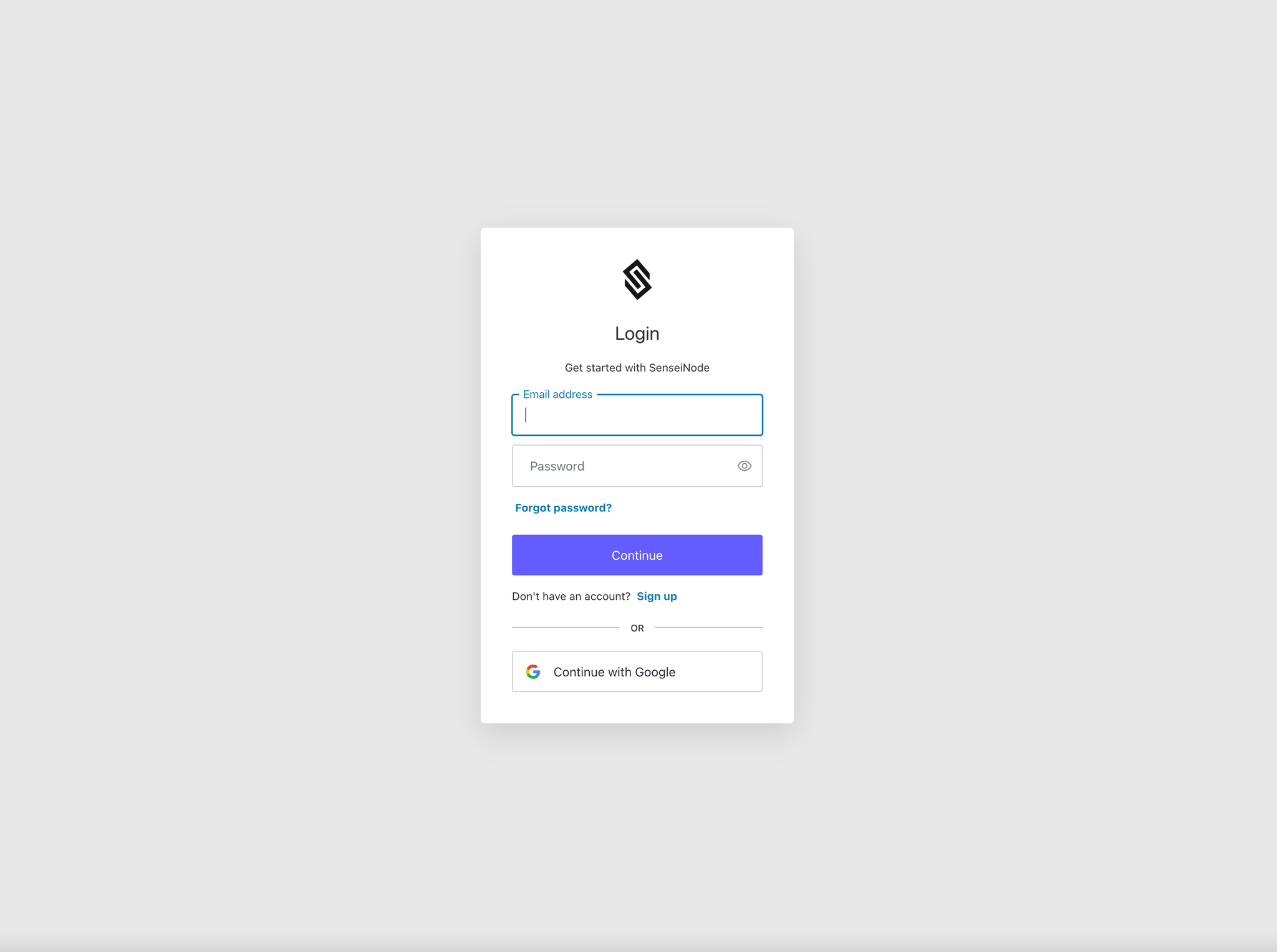
Ethereum Non-Custodial Staking
You will need to connect your crypto wallet to Web3 applications like Metamask or Wallet Connect:
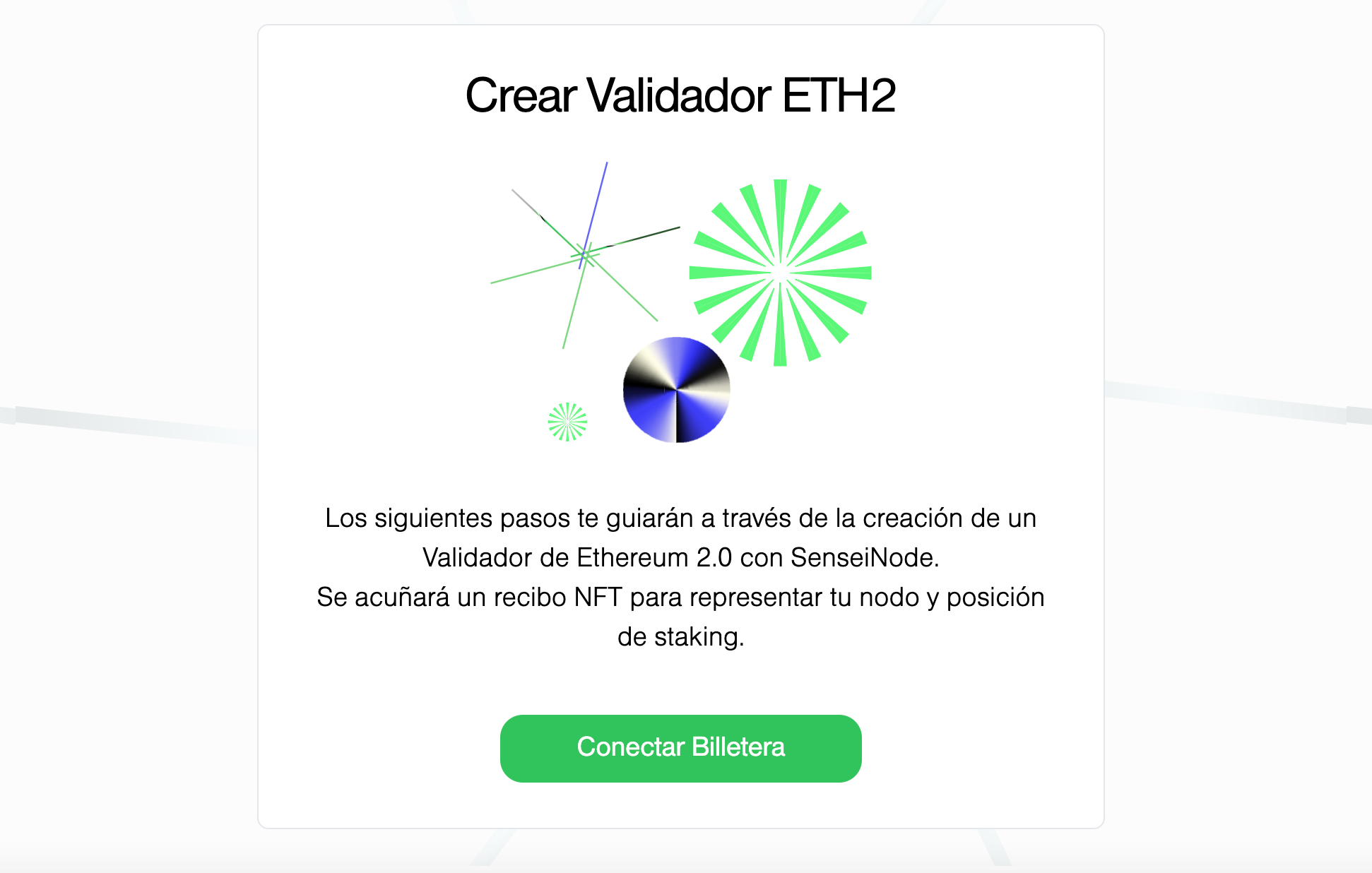
Once you have connected your wallet, you go directly into the 2-step process to create a Validator Node with SenseiStake.
Sensei Stake is a non-custodial staking platform to Ethereum 2.0, that uses a top-performance node infrastructure provided by Sensei Node. Geo-distributed across the Latin American region, fostering development and decentralization for the ETH2 ecosystem.

In this step you will see the first instructions of the process of creating a Validator and you will also be able to find links of interest with more information about staking in Ethereum 2.0 and a video tutorial on how to use the SenseiStake platform.
To become an Ethereum Validator and be able to earn staking rewards, you'll need to deposit 32 ETH via your connected wallet. Once the deposit is made, the smart contract will generate an NFT receipt that represents your staked position and Validator. The commission for this service is 10% of the node rewards.
Continue to the next screen by clicking on “Stake”.
If you have less than 32 ETH don't worry, you can still participate through a staking pool here.
ETH Deposit
With SenseiStake's non-custodial service, we take care of all the technical aspects and you only need to deposit your 32 ETH by interacting with the smart contract directly from your connected wallet.
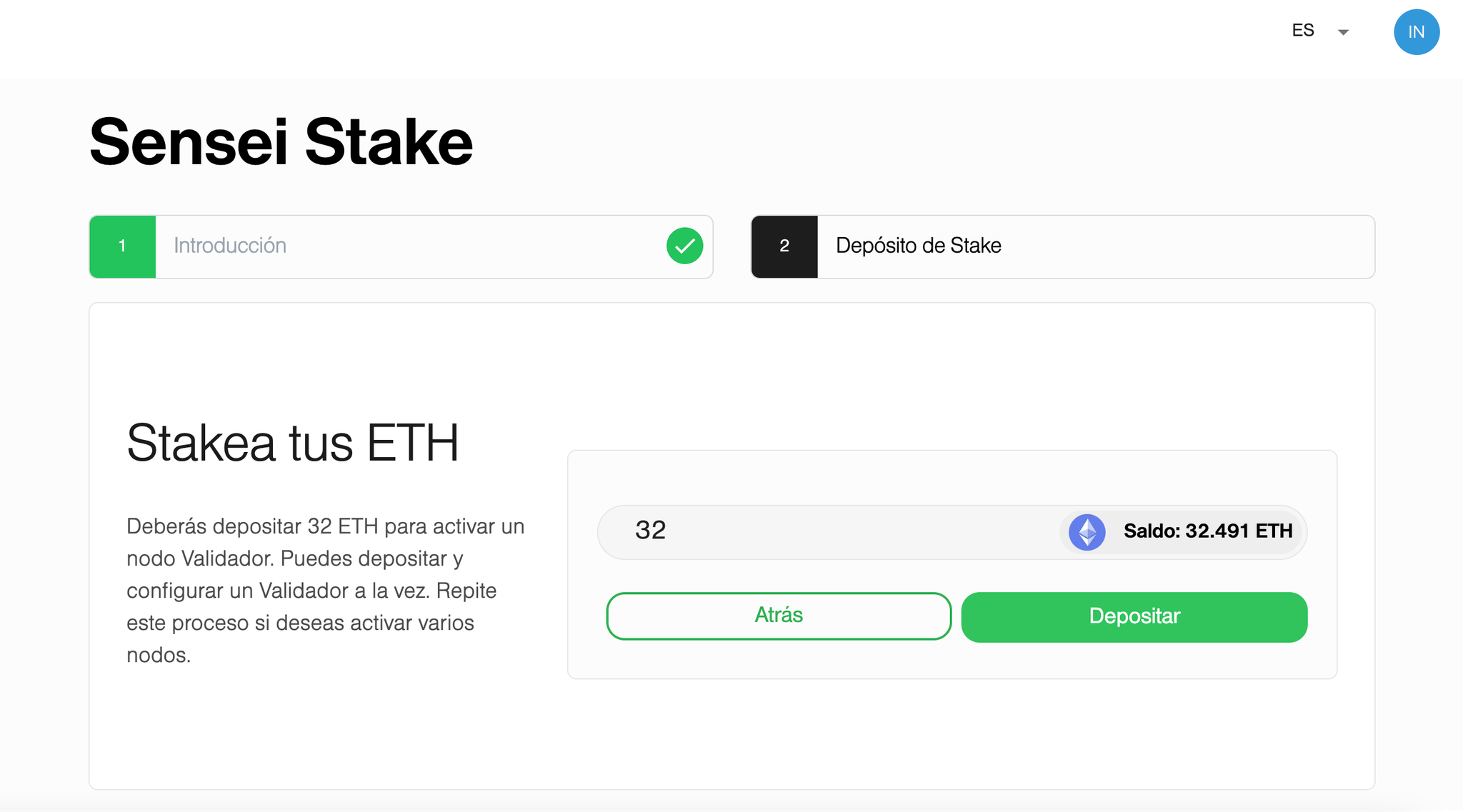
In this step you must deposit 32 ETH to activate an Ethereum 2.0 Validator node.
You can deposit and setup one Validator at a time. Repeat this process if you want to activate several nodes. Each Validator has configured a minimum staking period of 6 months (exit date) until then withdrawals will not be available.*
Stake withdrawals wont be available until the Shanghai update of the Ethereum network, regardless of the Validator's exit date*
Clicking on “Deposit” will open the interaction box from your connected wallet:
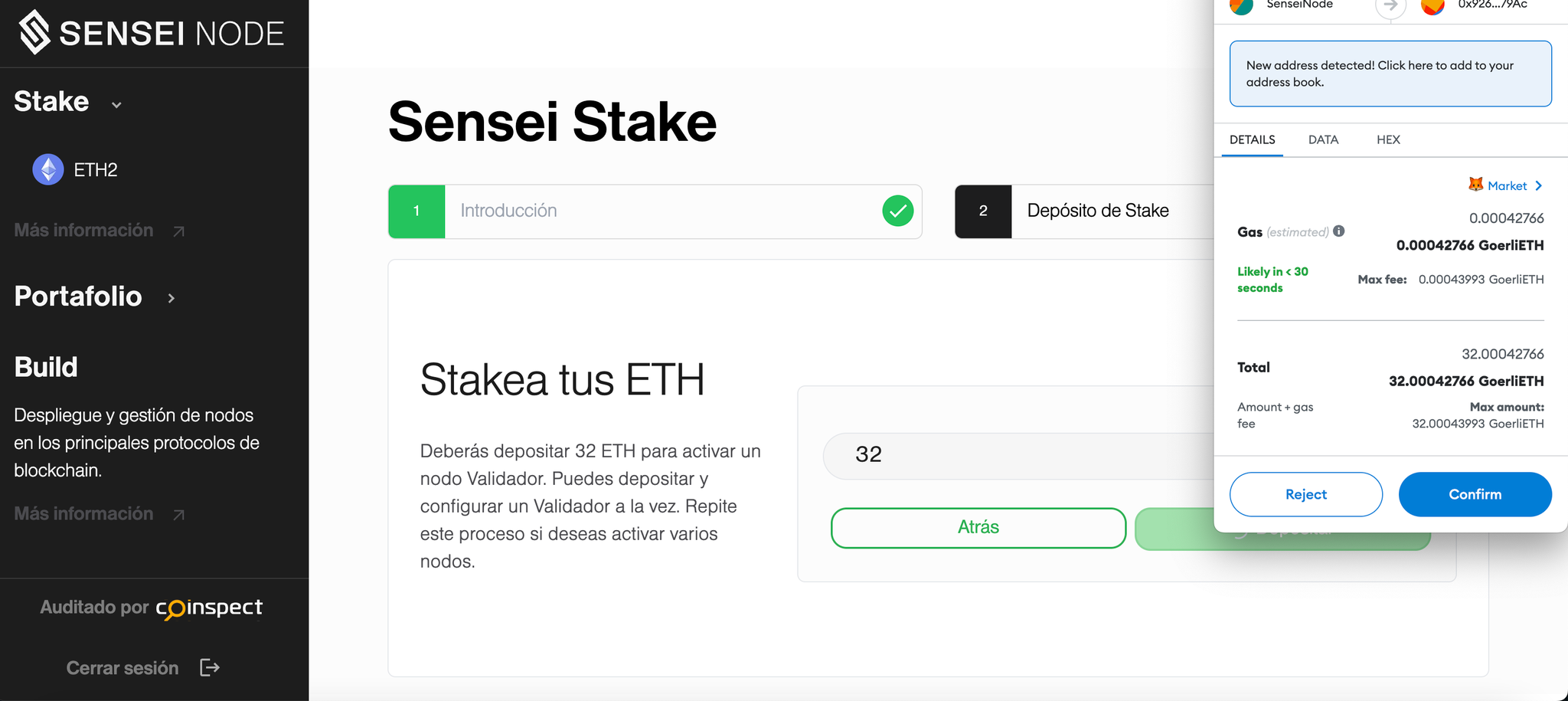
Confirm the deposit transaction from your wallet and wait for confirmation. Remember that in addition to the 32 ETH stake, you will need a little balance to cover gas fees.
Once the transaction is confirmed by the network you will be automatically directed to the next screen.
Your Validator is Ready!
When you see this message, it means that your stake deposit has been confirmed, your Validator node has been created and you have received the NFT with the certificate of ownership of the stake and its rewards:
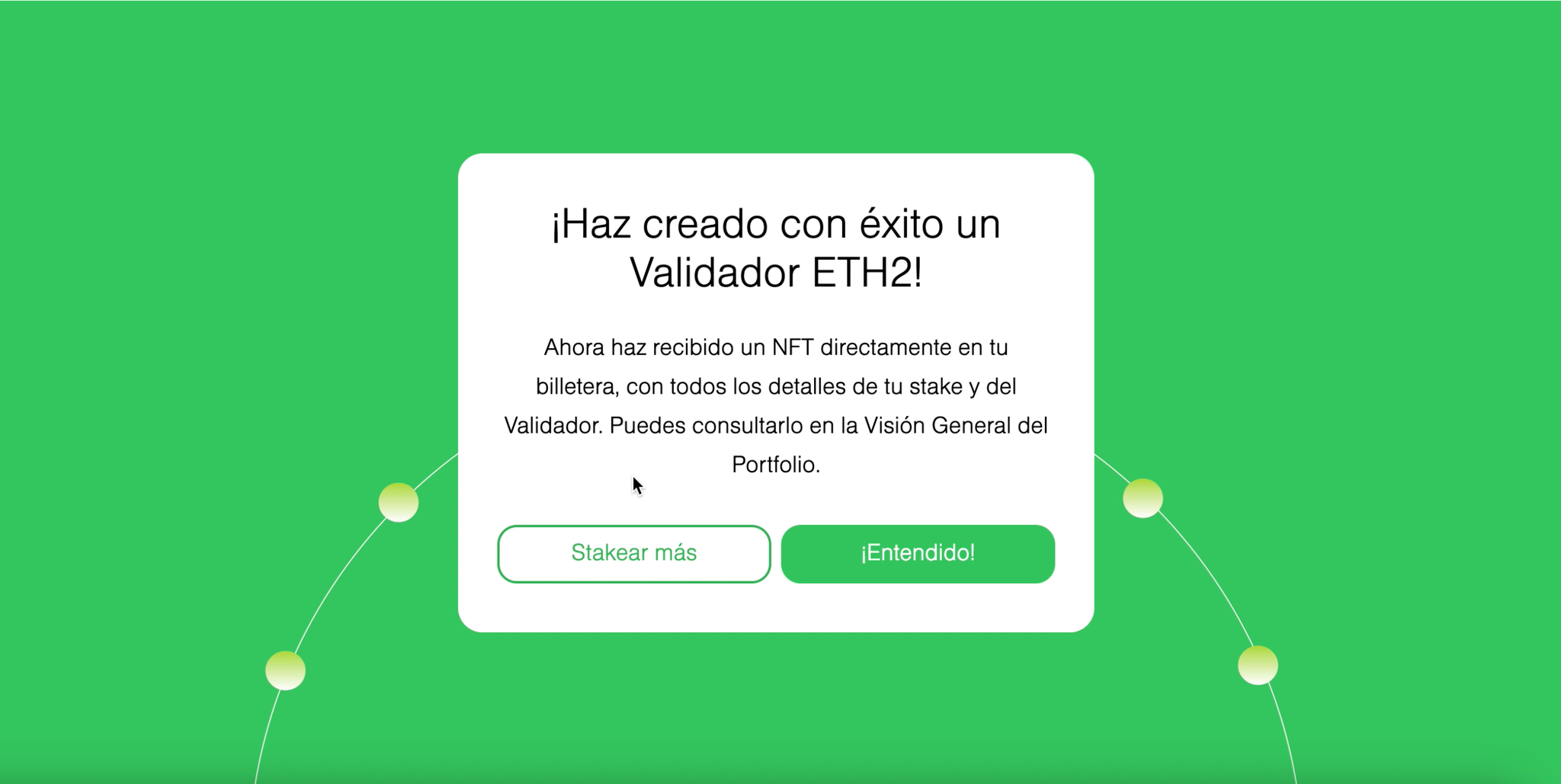
Now you have received an NFT directly in your wallet, with all the details of your stake and the Validator. You can check it in the Portfolio Overview.
In this window you can repeat the process to create more Validating nodes by pressing the "Stake more" button, in this way you will return to the beginning of the process and repeat the deposit.
You can also go to the Portfolio section by clicking on “Got it!” and you will be automatically redirected.
Portfolio
This is the overview of your nodes and positions with SenseiStake, which serves as a control panel to see your total balances and more information about your Validators:
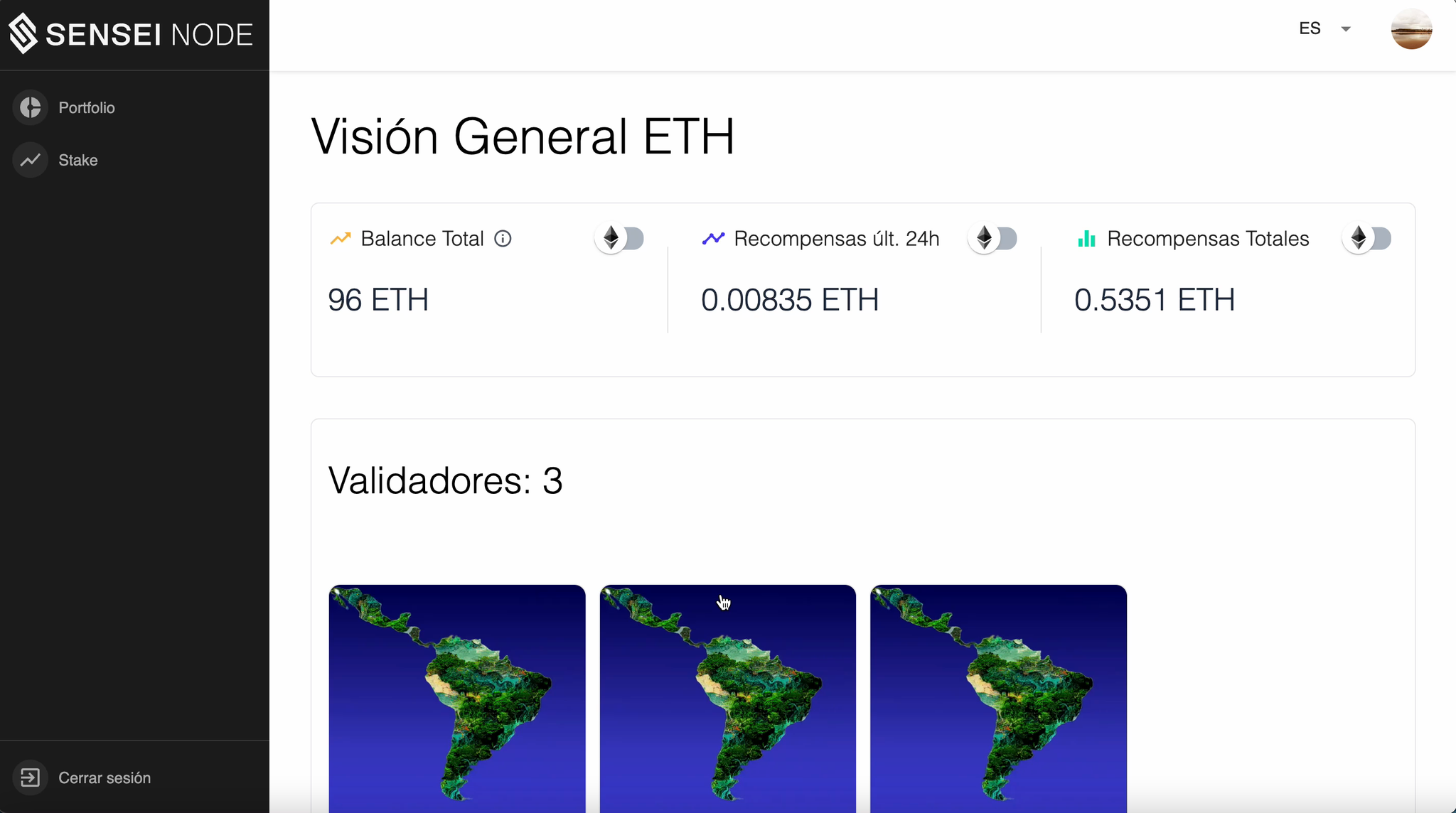
Here are the detail cards of the NFT certificate of your Validator nodes created with SenseiStake.
SenseiStake Ethereum Validator NFT
In the Portfolio you will be able to see all the data of your stake position, rewards and data of the Ethereum Validator assigned to your NFT:
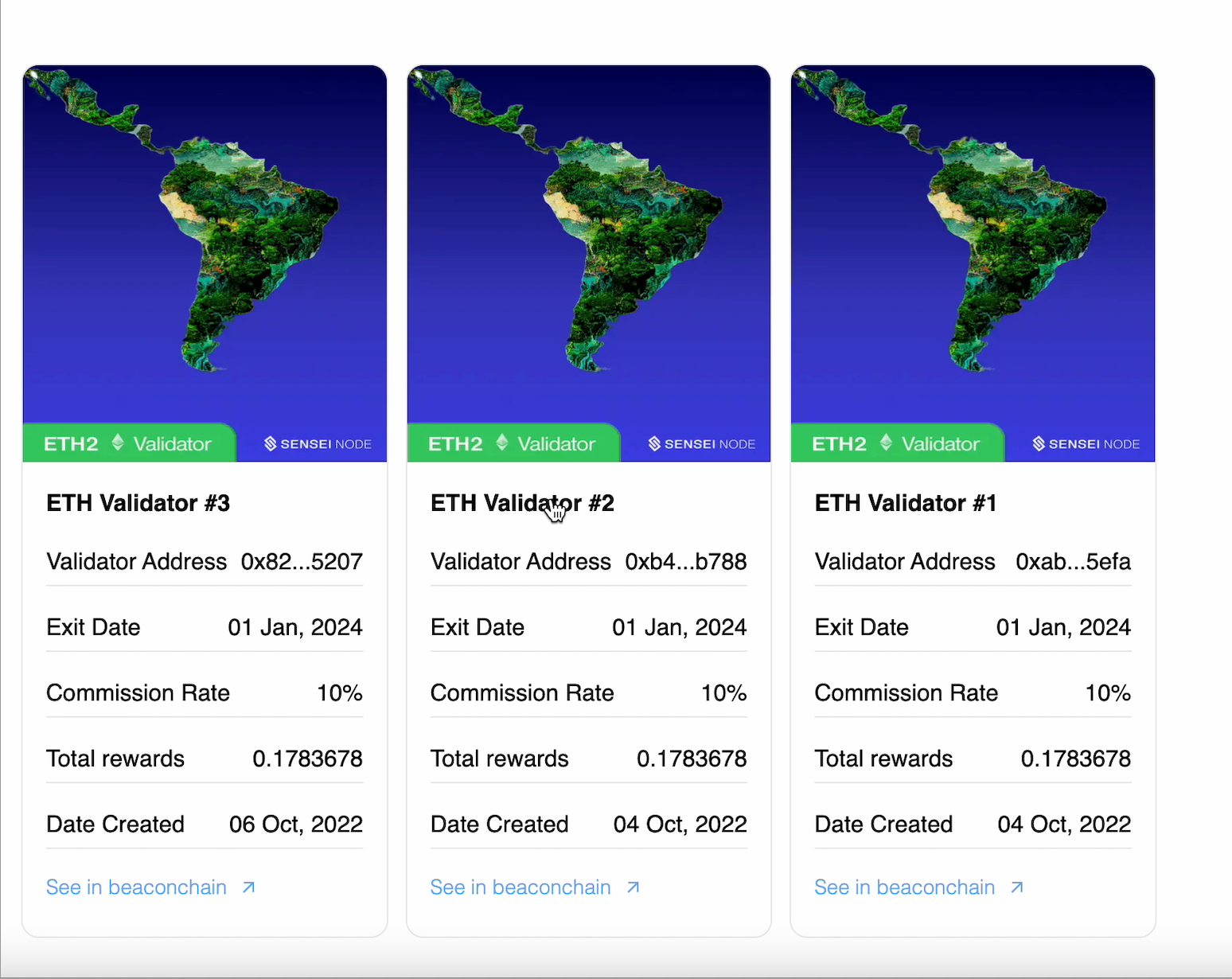
This NFT (Non-Fungible Token) works as the ownership certificate of your Validator node, given its inherent property to be able to be traded as ownership of the stake position, your Validator has a liquidity capacity through this NFT.
The NFT metadata has all the main data of your Validator such as its address, the exit date (exit date) of the minimum staking period, commission, total rewards and creation date.
In the Portfolio view you can also find the link to see the Validator directly in the blockchain explorer.
And that's how easy it is to participate in Ethereum 2.0 security and consensus with SenseiStake.
Visit senseinode.com
Other information about Ethereum here:
Ethereum staking | ethereum.org
Staking is the act of depositing 32 ETH to activate validator software. As a validator you'll be responsible for storing data, processing transactions, and adding new blocks to the blockchain. This will keep Ethereum secure for everyone and earn you new ETH in the process.
https://ethereum.org/en/staking/

